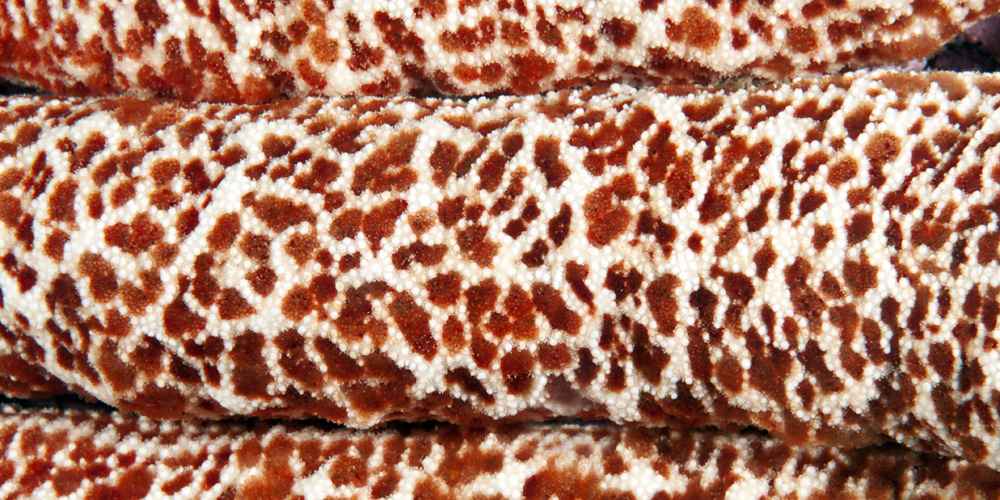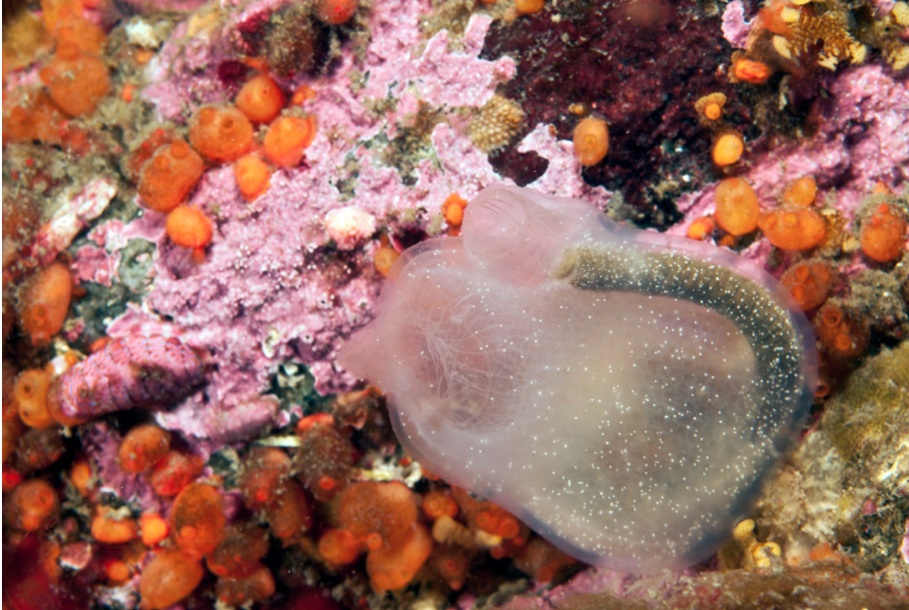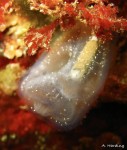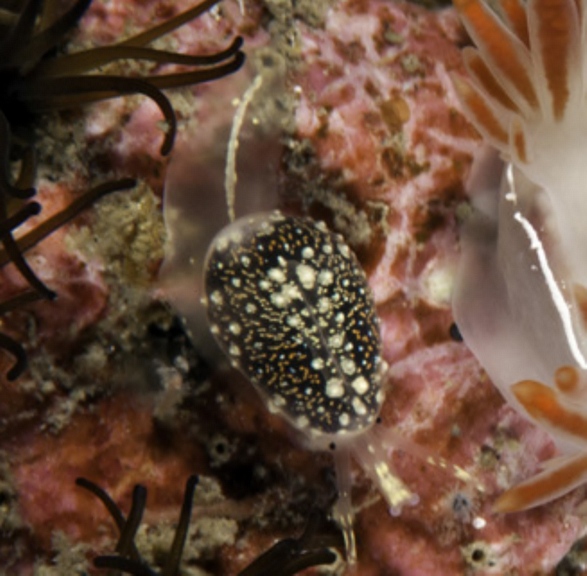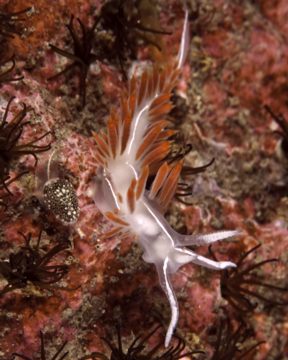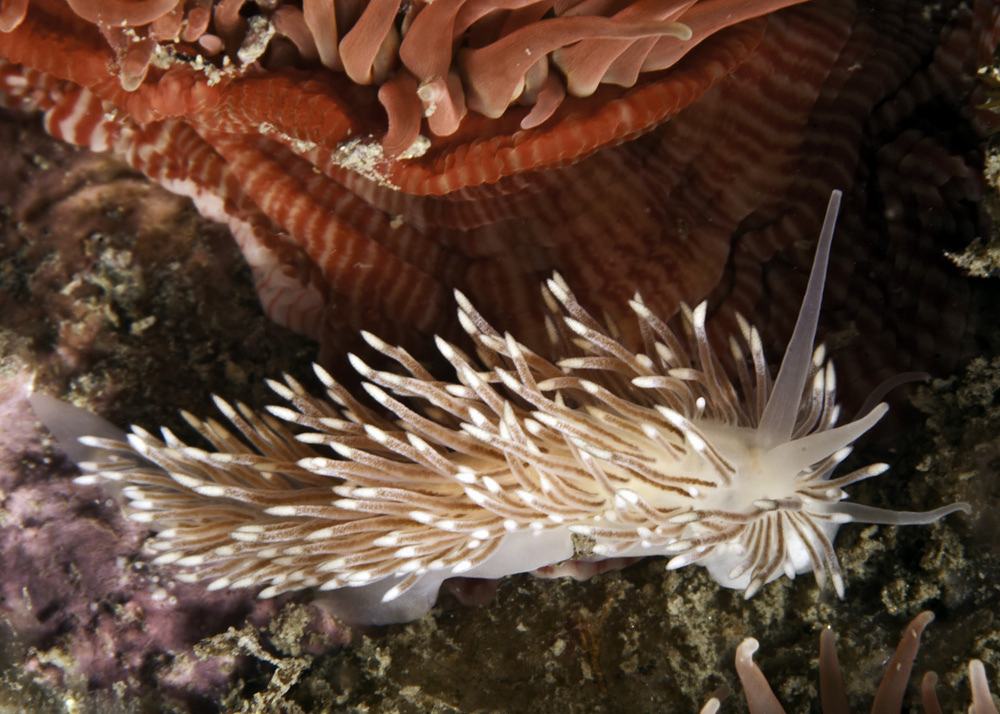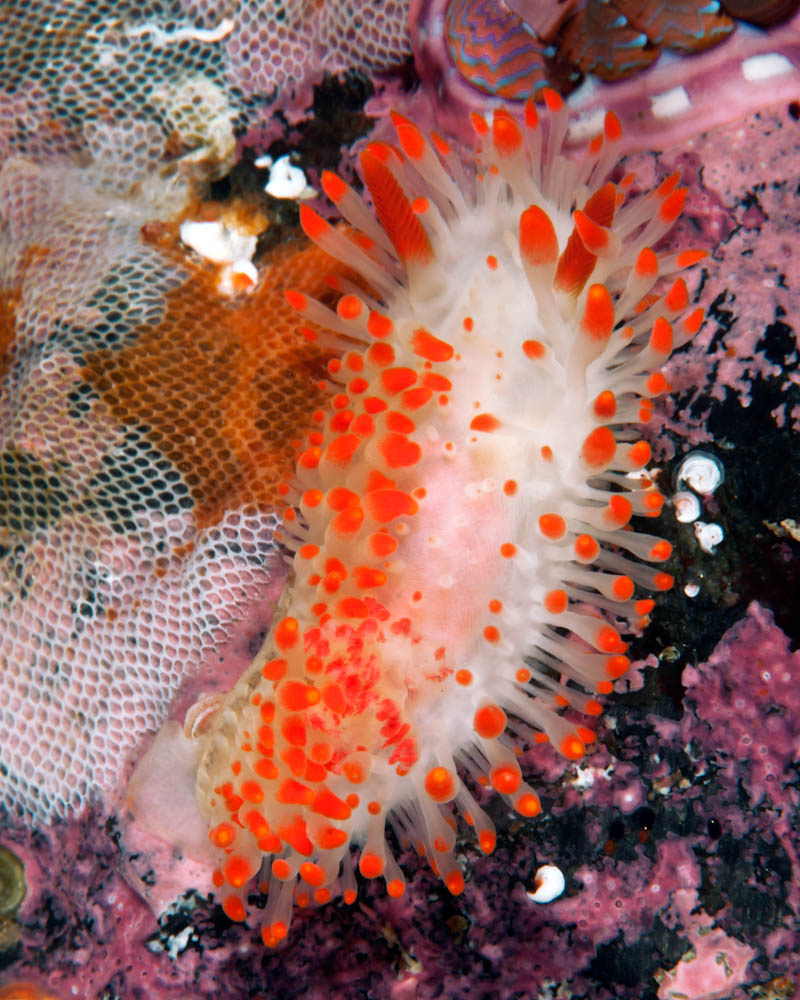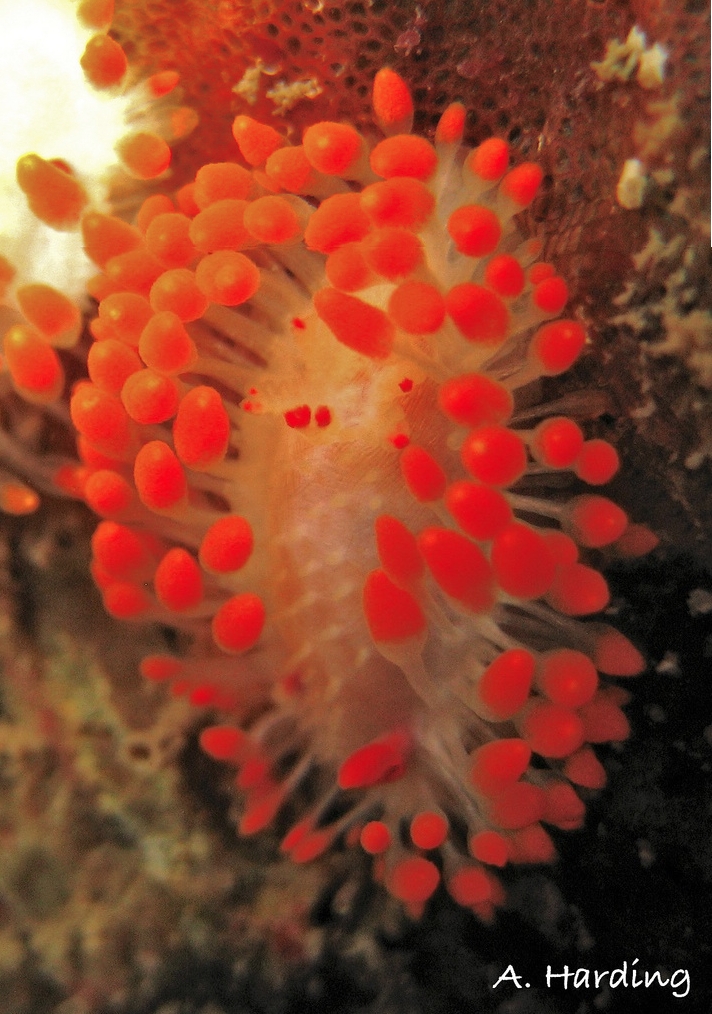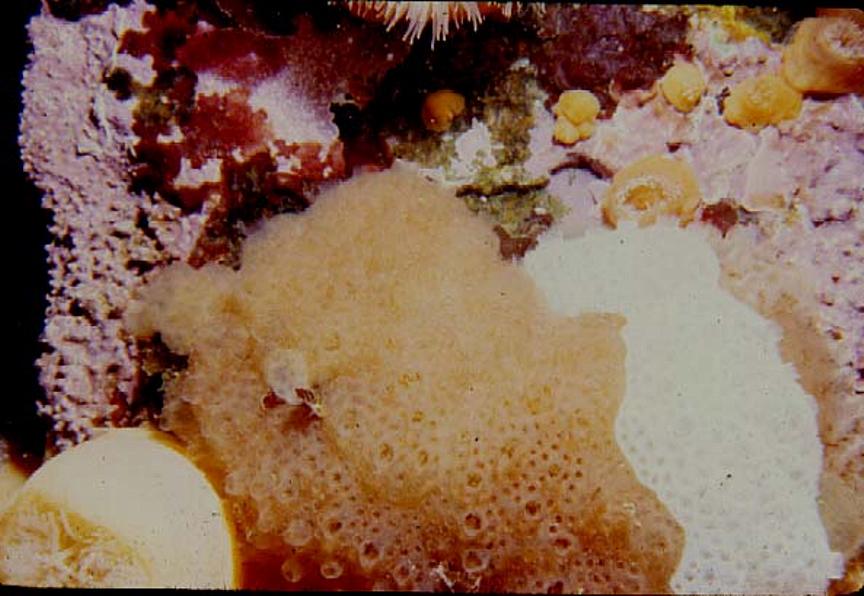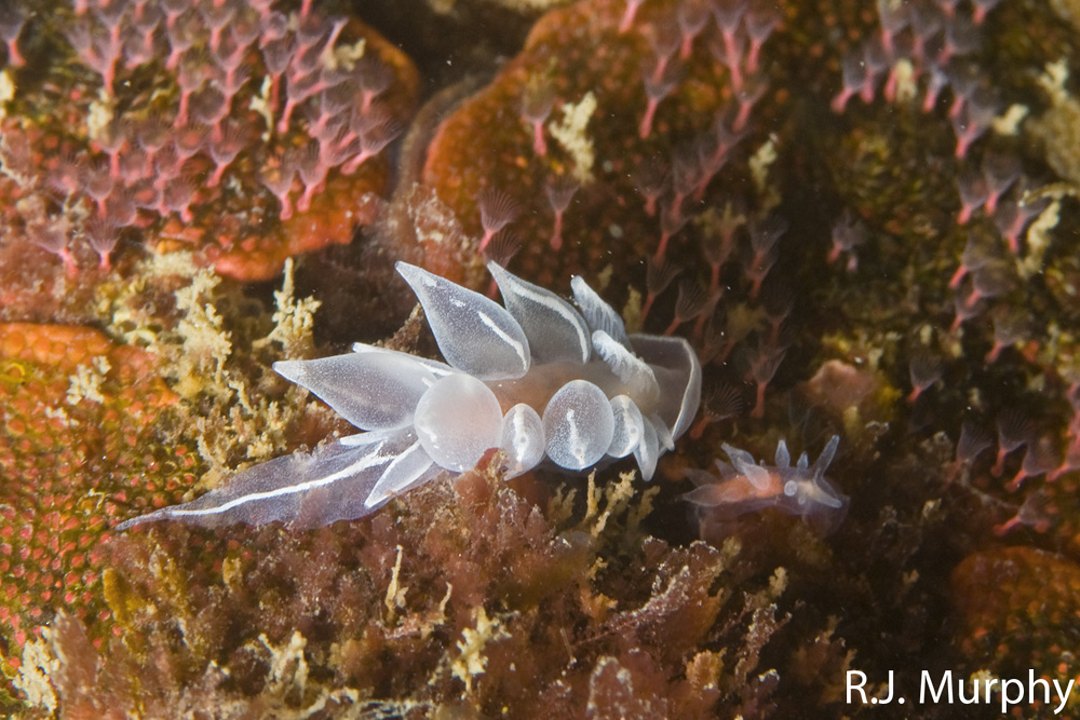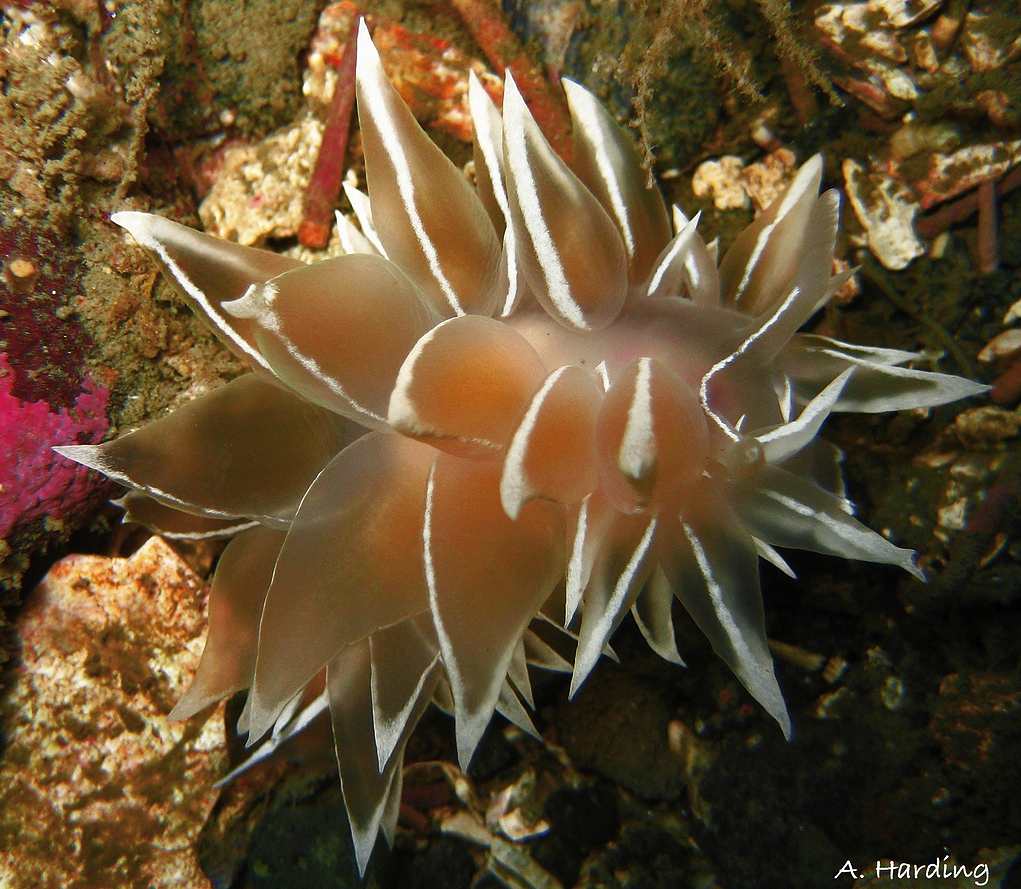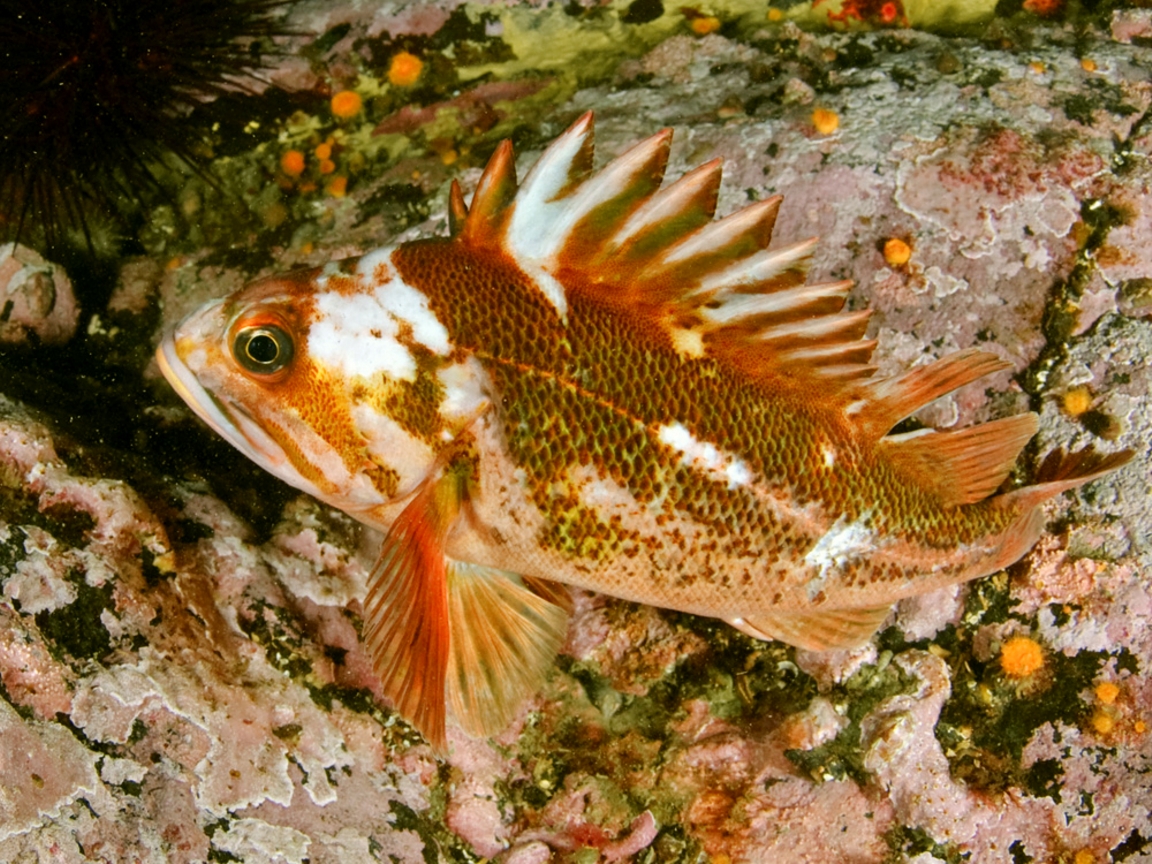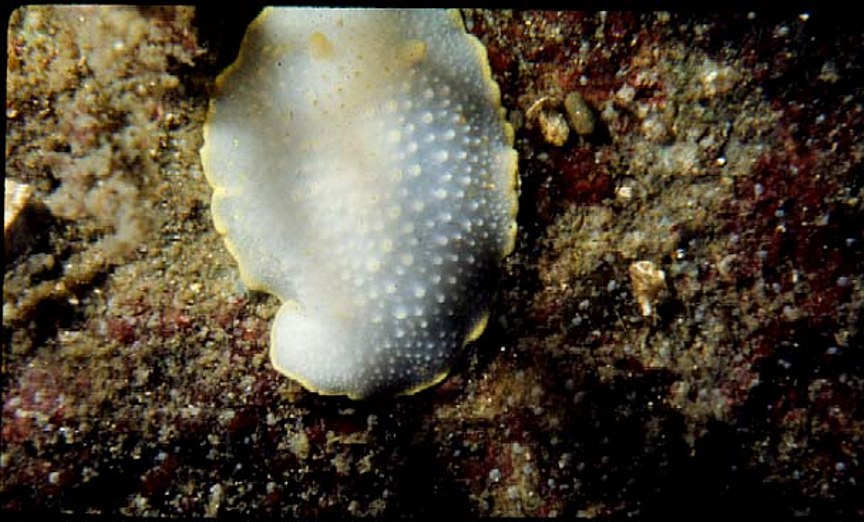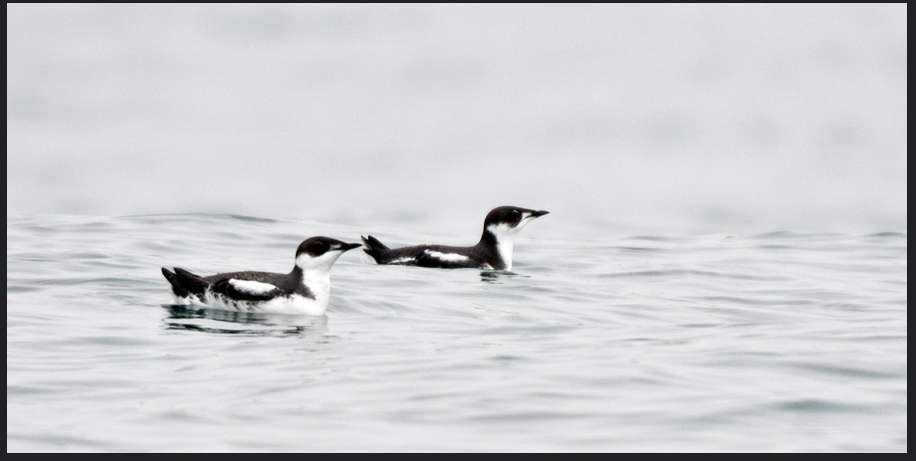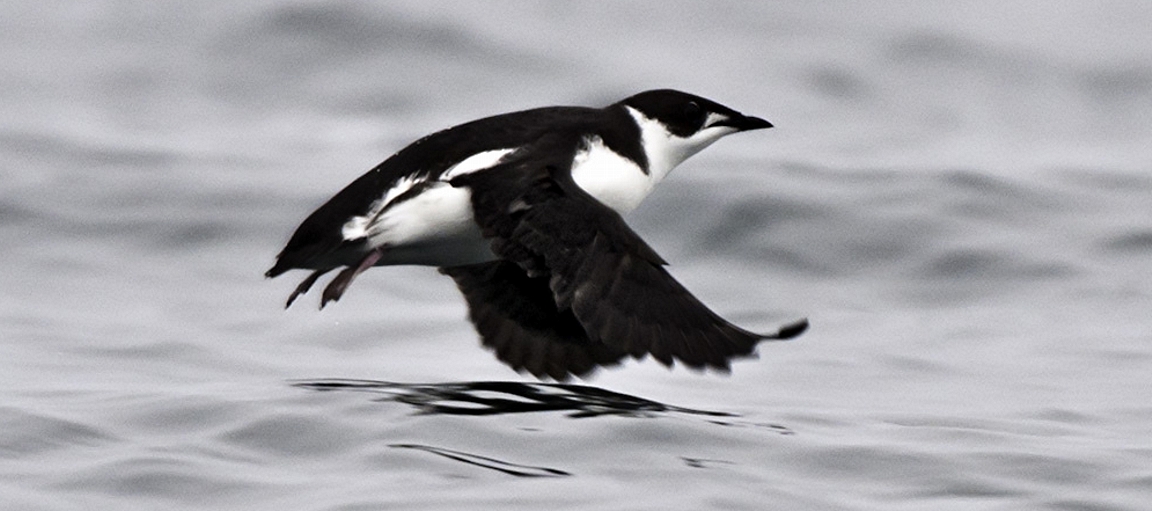Domain Eukarya
Kingdom Animalia
Phylum Echinodermata
Class Asteroidea
Order Forcipulatida
SuborderAsteriadina
Family Asteriidae
Genus Evasterias
Species troschellii
Common Name: Mottled Star)
Recently Russian Scientists researching two other members of the genus, Evasterias , discovered of new steroid compounds.
Steroid compounds from two Pacific starfish of the genus Evasterias
E. V. Levina, A. I. Kalinovsky and P. V. Dmitrenok
QUOTE from Pub-med
.
Jan-Feb 2009;35(1):134-41.
doi: 10.1134/s1068162009010166.
“Abstract
Three new steroid glycosides (evasteriosides C, D, and E), along with six known compounds, were isolated from two Pacific starfish of the genus Evasterias. Evasterioside C from E. retifera collected from the Sea of Japan was identified as (20R,22E)-3-O-(beta-D-xylopyranosyl)-24-nor-5alpha-cholest-22-ene-3beta,6beta,8,15alpha,26-pentaol 26-sulfate sodium salt. The structures of evasterioside D and E from E. echinosoma (collected from the Gulf of Shelichov, the Sea of Okhotsk) were established as (20R,24S)-24-O-(beta-D-glucopyranosyl)-5alpha-cholestane-3beta,6alpha,8,15beta,24-pentaol and (20R,24S)-3,24-di-O-(beta-D-xylopyranosyl)-cholest-4-ene-3beta,6beta,8,15alpha,24-pentaol, respectively. In addition, the known compounds pycnopodiosides A and C, luridoside A, 5alpha-cholestane-3beta,6alpha,8,15beta,16beta,26-hexaol, 5alpha-cholestane-3beta,6alpha,8,15beta,24-pentaol 24-sulfate sodium salt, and marthasterone sulfate sodium salt were identified in E. echinosoma. The structures of the isolated compounds were established on the basis of spectroscopic analyses using 1D and 2D NMR techniques, mass spectrometry, and some chemical transformations.
Similar articles
-
[Steroid compounds from far Eastern starfishes Henricia aspera and H. tumida].
Bioorg Khim. 2005 Sep-Oct;31(5):519-27. doi: 10.1007/s11171-005-0064-y.PMID: 16245695 Russian. -
[Polyhydroxylated steroid compounds from the Far Eastern starfish Distolasterias nipon].
Bioorg Khim. 2008 Jan-Feb;34(1):129-35. doi: 10.1134/s1068162008010160.PMID: 18365748 Russian. -
J Nat Prod. 2005 Oct;68(10):1541-4. doi: 10.1021/np049610t.PMID: 16252922
-
Bioorg Khim. 2010 Mar-Apr;36(2):251-8. doi: 10.1134/s1068162010020135.PMID: 20531484 Russian.
-
Bioorg Khim. 2007 May-Jun;33(3):357-64.PMID: 17682393 Russian.
| Other Members of the Phylum Echinodermata at Race Rocks |
and Image File |
 The Race Rocks taxonomy is a collaborative venture originally started with the Biology and Environmental Systems students of Lester Pearson College UWC. It now also has contributions added by Faculty, Staff, Volunteers and Observers on the remote control webcams. Ryan Murphy, 2011 The Race Rocks taxonomy is a collaborative venture originally started with the Biology and Environmental Systems students of Lester Pearson College UWC. It now also has contributions added by Faculty, Staff, Volunteers and Observers on the remote control webcams. Ryan Murphy, 2011
|

